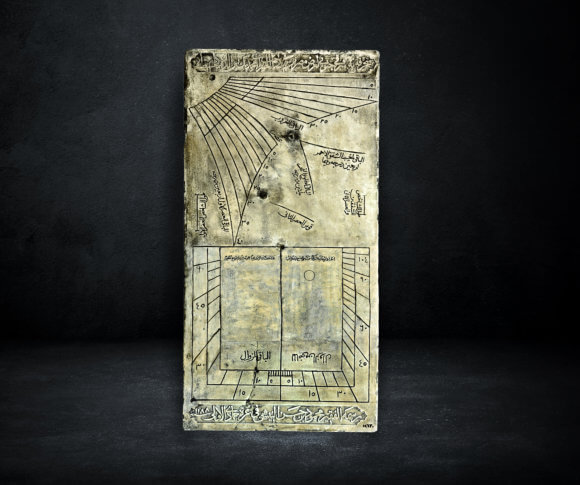
"Sundial (Mazwala), carved stone,
signed by Maḥmūd ibn Ḥassan al- Nīshī
Egypt - Ottoman
12th A.H / 18th A.D century
MIA no. 12630"
"This sundial has two inscriptions in the upper and lower parts; the first bears the name of Muḥammad Bey Abu al-Dahab, the governor who ordered its fabrication, the second includes the name of its craftsman and the date of manufacture and reads: “ made by the humble Maḥmūd ibn Ḥasan al-Nīshī in the first of Jumādā in the year 1188 AH
hall 24"
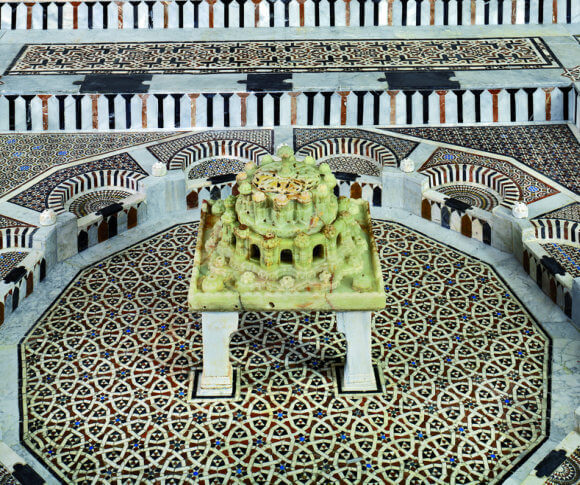
hall 23
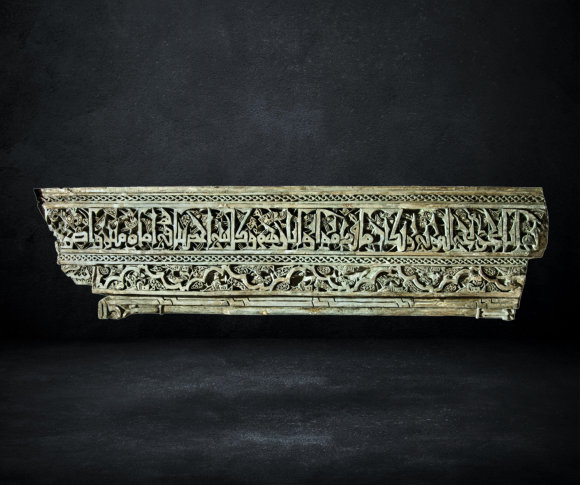
"Stucco carved frame of a window
from the madrasah of sultan al-Kamil
Egypt- Ayyubid
7th A.H/13th A.D century
MIA no. 1403"
Read More >"This unique example was brought from the Madrasah of sultan al-Kāmil 622AH/1225AD, that was overlooking al-Mu’izz street at that time. The window has a border frame decorated with Kufic writings and interlaced vegetal motifs.
hall 6"
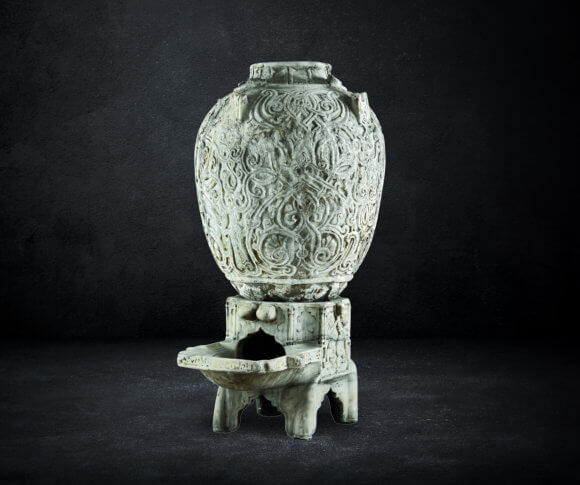
"Marble Jar Egypt – Mamluk
Marble stand “Kilga” Egypt – Fatimid or Ayyubid
6th – 8th A.H /12th – 14th A.D century
MIA no. 34+97"
"White marble water jar decorated at the neck with raised Kufic inscriptions and at the bottom with four fish. The body is decorated with vegetal stems and leaves. This water jar was brought over to the MIA from the mosque/madrasah of Tatar al-Ḥijāziyyah (761AH-1359AD). The stand of water jar (kilgah) is also made of marble and has four legs decorated with Kufic writings and animal figures on its sides.
hall 9"

"Marble medallion brought from the Madrasa of Sarghatmish
This object had been selected to be the main logo of the MIA
Egypt – Mamluk
8th A.H /14th A.D century
MIA no. 2788"
"This medallion has a central circle circumscribing six tangentially arranged roundels inside it. The roundels are decorated with vegetal stems ending at their center with roses, and five lobed petals. It was transferred to the MIA from the school (madrasah) of prince Ṣarghatmish (757AH/1356AD), one of the princes of sultan al Nāṣir Qalawῡn, and this school was built in the year 757 AH/1356 AD. The main central motif of this medallion has been adopted as the logo of the Museum since 2010 AD.
hall 9"
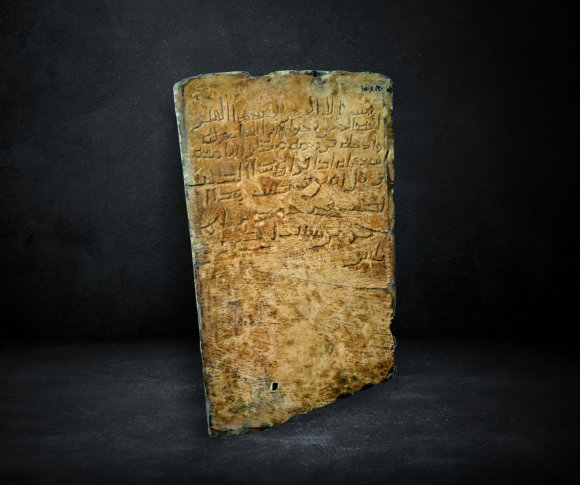
"Tombstone of
carved limestone
Egypt – The Rashidun
1th A.H / 7th A.D century
MIA no. 1508/20"
"It is from the master pieces in Islamic art because it is the oldest dated tombstone in Islam and it housed the first model of inscriptions in Islamic art. The tombstone has eight lines inscribed in primitive Kufic. The writings contained the name of the deceased ‘Abd al-Rahman ibn Khayr al-Hagari or al-Hijazi, and some supplications given to him as well as the date of his death in Gumada II 31AH/ Jan-Feb 652AD
hall 19"